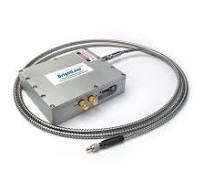The Power of Medical Laser Diodes in Modern Healthcare
Medical laser diodes have revolutionized the field of healthcare, offering precise and effective solutions for a wide range of medical procedures. These small semiconductor devices emit highly concentrated light that can be precisely focused to target specific tissues or cells within the body.
One of the key advantages of medical laser diodes is their versatility. They are used in various medical applications, including surgery, dermatology, ophthalmology, dentistry, and many more. The ability to adjust the wavelength and intensity of the laser light makes them ideal for different types of procedures.
In surgical settings, medical laser diodes are used for cutting, cauterizing, and vaporizing tissues with unparalleled precision. This minimally invasive approach reduces bleeding, pain, and recovery time for patients. In dermatology, laser diodes are utilized for skin resurfacing, hair removal, tattoo removal, and treatment of vascular lesions.
Furthermore, medical laser diodes have proven to be invaluable tools in ophthalmic surgeries such as refractive surgery, cataract surgery, and retinal treatments. Their ability to deliver focused beams of light enables surgeons to perform delicate procedures with exceptional accuracy.
In dentistry, laser diodes are used for procedures like cavity detection, gum disease treatment, teeth whitening, and soft tissue surgeries. The precision offered by these lasers minimizes damage to surrounding tissues and reduces the need for anesthesia in certain cases.
As technology continues to advance, medical laser diodes are becoming increasingly compact and efficient. This allows healthcare providers to integrate them into a wider range of medical devices for improved patient outcomes.
In conclusion, the use of medical laser diodes has transformed modern healthcare by providing safer and more effective treatment options across various specialties. Their precision and versatility make them indispensable tools in the hands of skilled medical professionals striving to deliver optimal care to their patients.
5 Essential Tips for Safely Operating Medical Laser Diode Equipment
- Ensure proper eye protection is worn by both the operator and patient during laser diode procedures.
- Follow manufacturer’s guidelines for the appropriate settings and parameters when using a medical laser diode.
- Regularly calibrate and maintain the laser diode equipment to ensure optimal performance and safety.
- Avoid aiming the laser beam directly at reflective surfaces to prevent accidental reflections or injuries.
- Provide thorough training to all personnel involved in operating medical laser diode equipment.
Ensure proper eye protection is worn by both the operator and patient during laser diode procedures.
It is crucial to prioritize safety measures, such as ensuring proper eye protection is worn by both the operator and patient during medical laser diode procedures. The intense and focused light emitted by laser diodes can pose a risk of eye damage if not adequately shielded against. By following strict protocols for eye protection, healthcare professionals can safeguard their vision and that of their patients, ensuring a secure environment for the effective use of medical laser diodes in various procedures.
Follow manufacturer’s guidelines for the appropriate settings and parameters when using a medical laser diode.
It is crucial to follow the manufacturer’s guidelines for the appropriate settings and parameters when using a medical laser diode. These guidelines are designed to ensure the safe and effective operation of the device, as well as to optimize treatment outcomes. Adhering to the recommended settings helps minimize risks associated with incorrect usage, such as tissue damage or ineffective treatment. By following the manufacturer’s instructions diligently, healthcare professionals can harness the full potential of medical laser diodes while prioritizing patient safety and well-being.
Regularly calibrate and maintain the laser diode equipment to ensure optimal performance and safety.
It is crucial to regularly calibrate and maintain the medical laser diode equipment to ensure optimal performance and safety. Proper calibration helps ensure that the laser output remains accurate and consistent, which is essential for achieving desired treatment outcomes. Regular maintenance not only prolongs the lifespan of the equipment but also reduces the risk of malfunctions or accidents during medical procedures. By prioritizing calibration and maintenance routines, healthcare providers can uphold the highest standards of performance and safety when utilizing medical laser diode technology.
Avoid aiming the laser beam directly at reflective surfaces to prevent accidental reflections or injuries.
To ensure safety when using medical laser diodes, it is crucial to avoid aiming the laser beam directly at reflective surfaces. Doing so helps prevent accidental reflections that could potentially lead to injuries. By directing the laser beam away from reflective surfaces, healthcare professionals can maintain control over the laser’s intended target and minimize the risk of unintended exposure to harmful laser light. This simple precautionary measure plays a vital role in ensuring the safe and effective use of medical laser diodes in various healthcare procedures.
Provide thorough training to all personnel involved in operating medical laser diode equipment.
It is crucial to provide comprehensive training to all personnel involved in operating medical laser diode equipment. Proper training ensures that operators understand the technology, safety protocols, and best practices for using the equipment effectively. By equipping personnel with the necessary knowledge and skills, healthcare facilities can enhance patient safety, minimize risks, and optimize the outcomes of medical procedures involving laser diodes. Ongoing training and education also help personnel stay updated on advancements in laser technology, ensuring that they can utilize the equipment to its full potential while maintaining a high standard of care.

No Responses